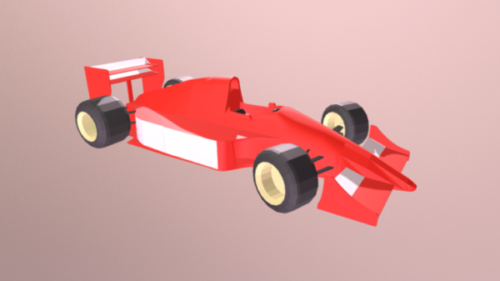Table Of Content
- F1 2025 driver line-up: Who is already confirmed for the 2025 grid?
- ‘Strange clause’ of Adrian Newey gardening leave discussed as F1 future remains uncertain
- Newey tipped to POACH key Red Bull staff if he joins F1 rivals
- Safety considerations in F1 car design
- Could Adrian Newey take Red Bull engineers with him?
- Ferrari has new F1 trackside strategy head for 2023
This woven matting of carbon strands pre-coated with resin is supplied on giant rolls and stored in freezers to keep it fresh. There are also limits on the amount of time that can be spent on CFD and in the wind tunnel, depending on where a team finished the previous season. The last placed gets 25 percent more time in the tunnel than the reigning champions. Aerodynamics is one of the most important areas and teams typically have 3-4 separate groups, each with a different focus area. They create designs to test in CFD (computational fluid dynamics) to decide which go into wind tunnel testing. During the season, more and more design personnel are moved across to work on the new car, but it’s only in winter that things come together physically, with externally manufactured items tested and designs turned into actual parts.
F1 2025 driver line-up: Who is already confirmed for the 2025 grid?
Applying another idea of Jim Hall's from his Chaparral 2J sports racer, Gordon Murray designed the Brabham BT46B, which had a radiator fan that also extracted air from the skirted area under the car, creating enormous downforce. After technical challenges from other teams, it was withdrawn after a single race. Rule changes then followed to limit the benefits of 'ground effects' – firstly a ban on the skirts used to contain the low-pressure area, later a requirement for a 'stepped floor'. The overall aerodynamic grip was dramatically reduced with the banning of complex appendages such as winglets, bargeboards and other aero devices previously used to better direct airflow over and under the cars. The maximum engine speed was reduced to 18,000 rpm to increase reliability further and conform to engine life demand. The new DRS (Drag Reduction System) rear wing system, introduced in 2011 usurped the former system.
‘Strange clause’ of Adrian Newey gardening leave discussed as F1 future remains uncertain
Fans will be able to witness the three Grand Prix winners and their teams - Mercedes AMG Petronas Motorsport, Aston Martin Red Bull Racing and Renault F1 Team - tear up the Hollywood Blvd. as F1 brings the Formula 1 atmosphere to the heart of the City of Angels. F1 is bringing the spectacle of racing to Los Angeles for the first time this October. Mercedes, Red Bull Racing and the Renault F1 Team will take to the streets as we shut down Hollywood Boulevard for an exhilarating live car run and immersive F1 Festival. Early auto manufacturers focused on functionality over aesthetics, but it wasn’t long before marques and their customers valued the automobile as much for its emotional allure as for its practicality. Before and after World War II, formal courses of study on the subject began to emerge, drawing from the disciplines of fine art, architecture and industrial design, each reflecting the culture and character of its environs. Today, transportation design is more global than ever, and with many aspiring artists in the field vying for so few coveted spots, top students flock to the handful of institutions that have produced some of the biggest names in the business.
Newey tipped to POACH key Red Bull staff if he joins F1 rivals
The diffuser area is another part of the car that has been revised in recent years. Until 2017, the rules curtailed the varying designs of the diffuser but since then designers have been able to play with not only the vertical strakes on the diffuser and the shape of the diffuser itself, but also the area around the tyre to improve the airflow. Usually when the driver lifts off the accelerator the DRS closes off automatically and the airflow reattaches to the rear wing, ensuring that the driver gets their downforce back.
Some, such as Mercedes at Monaco, increased the level of anti-dive at the front last year with upgrades. But expect more to replicate that this year, particularly at the rear end that requires changes to the gearbox casing. That’s anti-squat geometry - effectively the reverse of anti-dive with the rearmost wishbone arm mounted higher and the forward one lower. However, as the cockpit position was partly related to the way the car was designed to accommodate the zero-sidepod design that has since been dropped, changing this could be an option.
Safety considerations in F1 car design
A new car is produced every year, but unlike a road car, which typically stays the same once it’s rolled out the factory, an F1 car is continually developed, with new parts being introduced on a race-by-race basis. We want to ensure you have a great experience, so we typically start you off in a car that is easier to drive than say a Formula 1 car. Once you got the hang of it, you can progress to a higher performance car with each new race experience.

The beginner's guide to F1 car launches Formula 1® - Formula 1
The beginner's guide to F1 car launches Formula 1®.
Posted: Mon, 18 Mar 2024 14:30:02 GMT [source]
Aston’s tech chief also details how new cars are tested and given the green light to race by the sport’s governing body, the FIA, and talks about the challenge of keeping the new car secret until the last possible moment. Fallows worked alongside Adrian Newey at Red Bull Racing before joining Aston Martin in 2022 and the first car he fully oversaw for the team scored eight podiums in 2023. He goes on tell F1 Explains about the challenge of continuing to upgrade the 2023 car, while also looking ahead to the following season. "It feels like you get going with the season and you’re already thinking about the next one, but in reality it takes that long to design and build a car so you have to start thinking about it that early."
Ferrari has new F1 trackside strategy head for 2023
Well, all of them must be inspected and signed off before they make it onto the car itself – and there’s not just one of each part either. The F1 Hollywood Festival will blend the thrills of F1 with the culture of Hollywood, merging live car runs, surprise appearances, and musical performances. Ferrari will race at the Miami Grand Prix with a colour scheme featuring two different shades of blue to mark its history in the United States, the team announced on Tuesday. Speaking to La Gazzetta dello Sport, former F1 driver Ivan Capelli shared his thoughts on a possible headline Newey departure. Adrian Newey could convince some of his Red Bull colleagues to join him on a new Formula 1 project if he leaves Red Bull for a rival team, according to a former driver.
Schumacher BLAMES Horner for Red Bull's Newey nightmare
“It’s been an arms race between the teams to understand the physics because it’s a problem that’s going to be there for the next few years,” said Mike Elliott, the technical director for Mercedes. F1’s Motorsports team are confident that they’ve come up with a set of regulations that can achieve their objective of closer racing, while not being so prescriptive that they prevent creativity. Many parts are made in two or more sections - the moncoque chassis for example is two halves (top and bottom) that are glued together; the front and rear wings are hollow, bonded together to create the final construction.
The fuel used in F1 cars is fairly similar to ordinary (premium) petrol, albeit with a far more tightly controlled mix. Formula One fuel would fall under high octane premium road fuel with octane thresholds of 95 to 102. Since the 1992 season onwards all Formula One cars must mandatorily utilize unleaded racing gasoline fuel. Early experiments with movable wings and high mountings led to some spectacular accidents, and for the 1970 season, regulations were introduced to limit the size and location of wings. The engines are a stressed member in most cars, meaning that the engine is part of the structural support framework, being bolted to the cockpit at the front end, and transmission and rear suspension at the back end. On a F1 car, teams are allowed up to six structural members per wheel, typically made up of two double wishbones, the pushrod or pullrod and a steering arm or track rod, depending on if it is the front or the rear suspension.
As the year prior to the car’s launch progresses, the design becomes more involved and more detailed, and the team’s focus slowly moves away from developing the current car to producing the future one. Unlike many racing series, cars are completely unique to each team – as opposed to F2, which has a standard car, or even Formula E, which has a standard chassis – but there has been a trend towards some parts standardisation. The Brit has been with the Austrian team for 18 years, collecting 13 world championships and consolidating his legacy as the greatest designer the sport has ever seen.
In the past, some teams actually ran full-scale cars in wind tunnels but now the maximum is set at 60 per cent to reduce costs (as parts cost far more to build at full scale than at 60 per cent). Former DTM racer Bernd Mayländer has driven the safety car since 2000, but he’s not alone in the vehicle. Both are required to stay in the car for the entirety of the race, so they’re ready to go when needed.
By contrast, the shape and position of the 2022 car’s rear wing creates a rotational airflow that collects the rear wheel wake and rolls it into the flow exiting the diffuser – forming an invisible ‘mushroom’-shaped wake. Since the start of the 2011 season, cars have been allowed to run with an adjustable rear wing, more commonly known as DRS (drag reduction system), a system to combat the problem of turbulent air when overtaking. On the straights of a track, drivers can deploy DRS, which opens the rear wing, reduces the drag of the car, allowing it to move faster.

No comments:
Post a Comment